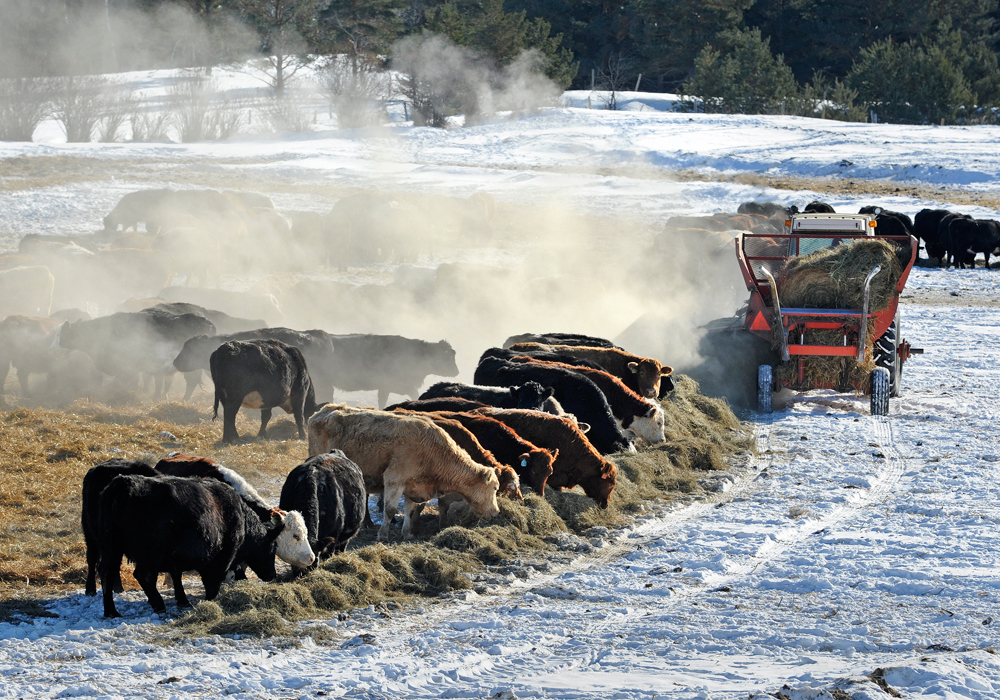An Alberta agency that funds research to help producers reach their full potential plans to launch three new networks that will target irrigation, soil health and beef improvement.
The networks will receive $10 million in funding over three years, said Mark Redmond, chief executive officer of Results Driven Agriculture Research (RDAR).
“They’re necessary because they are areas of significant opportunity for the province that we feel have lacked connection, so we have a lot of siloed research underway.”
He pointed to beef producers’ slow adoption of genomics technology.
Read Also

Research looks to control flea beetles with RNAi
A Vancouver agri-tech company wants to give canola growers another weapon in the never-ending battle against flea beetles.
“With all these great resources, why isn’t technology being adopted in terms of selecting better breeding stock, breeding for fertility and breeding for better feed conversion?”
Besides helping the bottom lines of producers, such improvements will reduce greenhouse gas emissions, said Redmond. World markets are increasingly demanding that such emissions be reported to help limit climate change, he said.
“They’ll be looking at clean labels, so as we want to continue to drive the Alberta brand for beef, for example, to be premium and recognized, we want to see some of these techniques employed in short order.”
A formal announcement about the networks will likely take place soon, said Redmond. He discussed them at RDAR’s recent inaugural Feet in the Field, Eyes on the Stars showcase of agricultural research funded by the agency.
More than 180 people attended the Edmonton event.
“Since RDAR’s first call in October of 2020, we have approved over 288 projects and invested more than $61.8 million,” said executive director of research Clint Dobson.
John Basarab of the University of Alberta and head of beef operations at Livestock Gentec, a genomics research and development agency, spoke at the conference.
He said hybrid vigour — a genetic boost attained by crossbreeding — is highly related to factors such as cow fertility, lifetime productivity and overall health resilience, as well as the carbon footprint of cattle.
“But the difficulty with that tool was it cost a lot of money.”
One strategy to make it more affordable involved DNA code pooling, said Basarab.
“Instead of doing one by one animal, for example, why don’t we just pool all of the DNA and just do one genotype, thus cutting the cost from thousands of dollars to hundreds of dollars and still allowing the producer to have access to that tool at least on a herd basis…?”
Researchers are conducting a project to collect DNA samples from thousands of head of cattle across Alberta, said Basarab.
“And that’s on a rush order to get done.”
The transdisciplinary network for beef improvement will also help forge connections between everyone from scientists and producers to industry to help solve problems such as feed and forage, said Redmond. “You can’t have cattle without feed, and so feed conversion is really important,” he said.
“The province has not had a feed strategy for over 10 years, we haven’t had a forage strategy for over 10 years, so we’ll be bringing those different groups together.”
Redmond said irrigation was selected as a network to focus research on issues such as water quality and management during an era of increasing climate change.
“There are a lot of inefficiencies and losses in our irrigation systems. How can we have better sensors and monitoring?”
Alberta in the last three years has announced some of largest expansions of its irrigation system in the province’s history. They include $117.7 million in 2021 to modernize irrigation infrastructure and increase water storage in southern Alberta, joining $815 million in 2020 to expand irrigation by up to 230,000 acres.
Climate change will likely affect the timing of the snow melt in the Eastern Slopes of Alberta’s Rocky Mountains, which contains the sources of the Saskatchewan River system relied on for irrigation, said Redmond. If much of the flow of water occurs in May instead of late June and July when needed by farmers, “how are we going to bridge that gap?” he said.
Soil health was chosen for the third transdisciplinary network due to its importance for everything from crops to sustainability and sequestration of carbon emissions, he said.
“You could ask me, ‘what do you mean by soil health?’ And that’s the problem,” he said.
“We haven’t really defined it. Is it the chemistry of the soil? The composition? Is it the microbiome in the soil? And so, getting a better handle on that whole structure of soil and the importance.”
Although Alberta has scientists who are world leaders on different aspects of soil health, they’re not linked, said Redmond. “And so, how can we find ways of developing that cluster to serve those greater needs?”


















